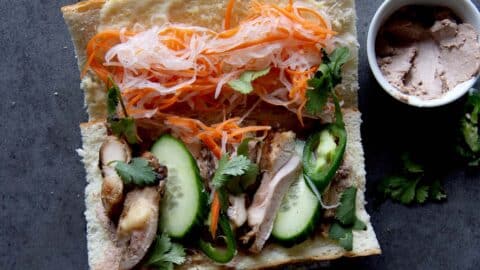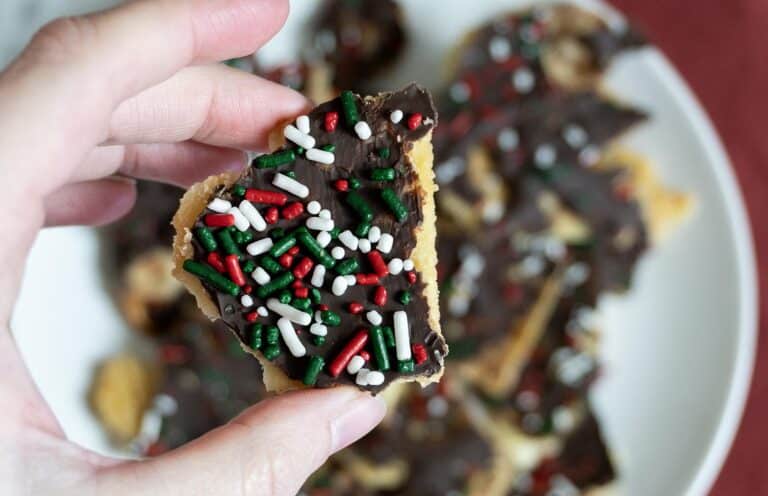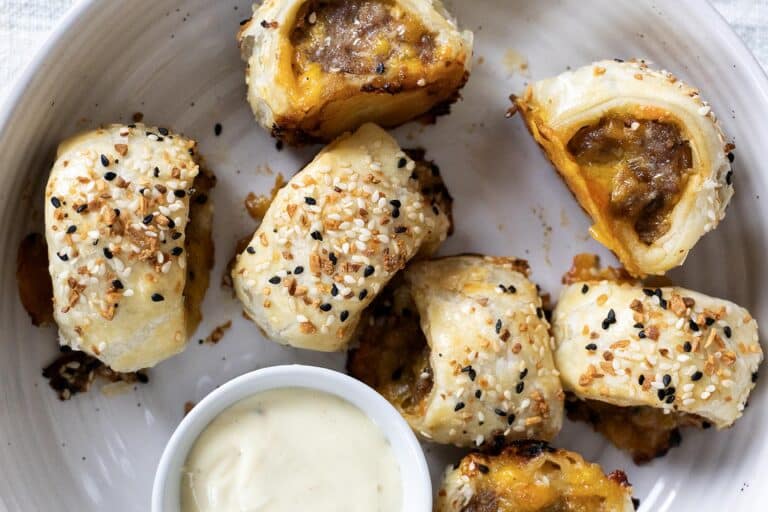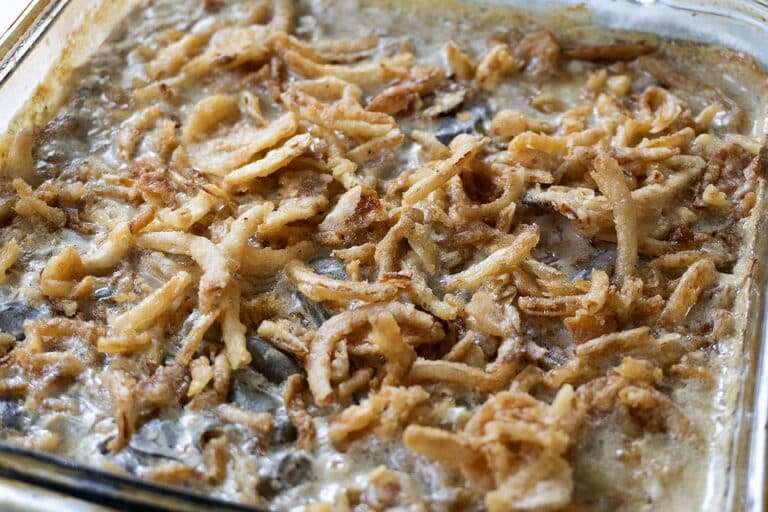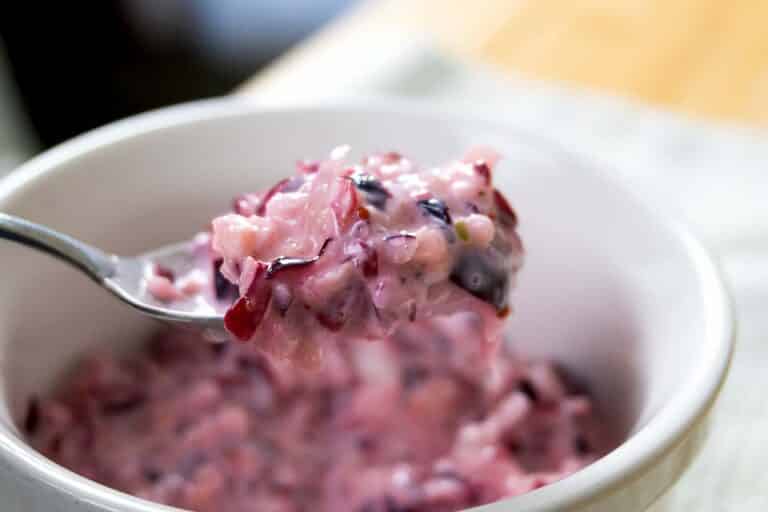Banh Mi
This Banh Mi is sure to become your new favorite sandwich with pate, pickled veggies, fresh herbs, rich mayo, and delicious savory chicken.
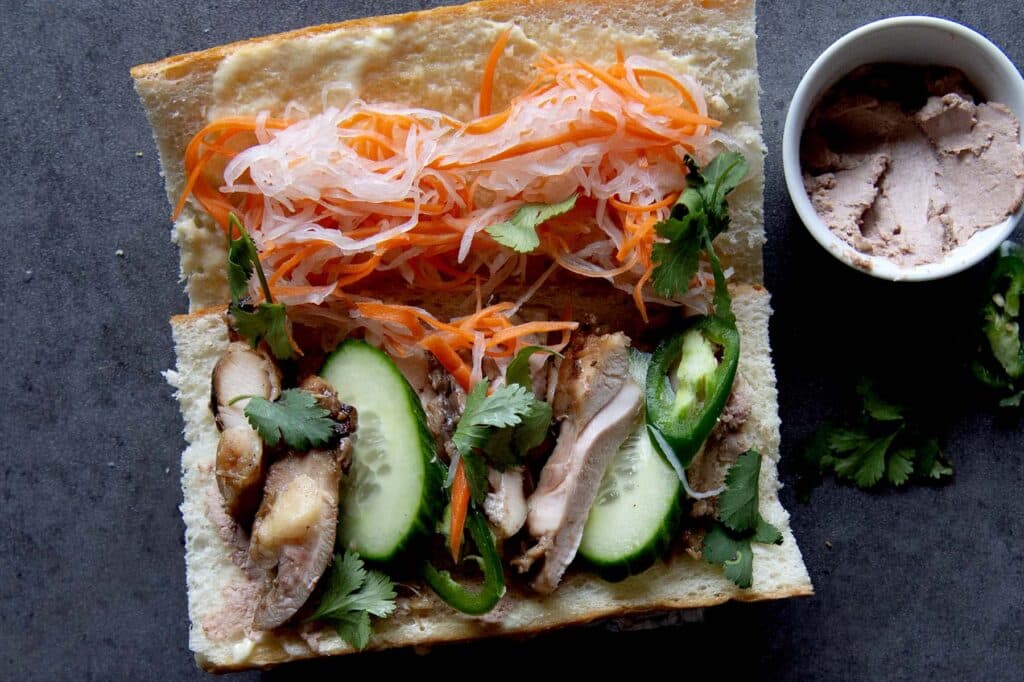
The Banh Mi sandwich, a Vietnamese culinary masterpiece, has become a beloved delicacy in Washington State, showcasing the state’s diverse food culture.
Looking to try sandwiches from across the United States? Check out Florida’s beloved Cubano, Wisconsin’s Fried Fish Sandwich, or Buffalo’s famous Beef on Weck.
What does banh mi usually have?
Typically, it consists of a crusty French baguette filled with a protein such as tofu, chicken, pork, or pork belly. The sandwich is then layered with a variety of ingredients like pate, hoisin sauce, daikon radish, carrot, pickled vegetables, liver pate, butter, mayo, and garnished with cilantro, salt, and pepper.
Banh Mi Recipe:
Creating this sandwich at home involves a few key steps. Start with a fresh baguette, slice it open, and spread a layer of butter and mayo. Add your choice of protein, whether it’s marinated tofu, grilled chicken, or succulent pork belly. Top it off with a generous amount of pickled daikon radish and carrots, a dollop of liver pate, a drizzle of hoisin sauce, and a sprinkle of salt and pepper. Garnish with fresh cilantro to elevate it.
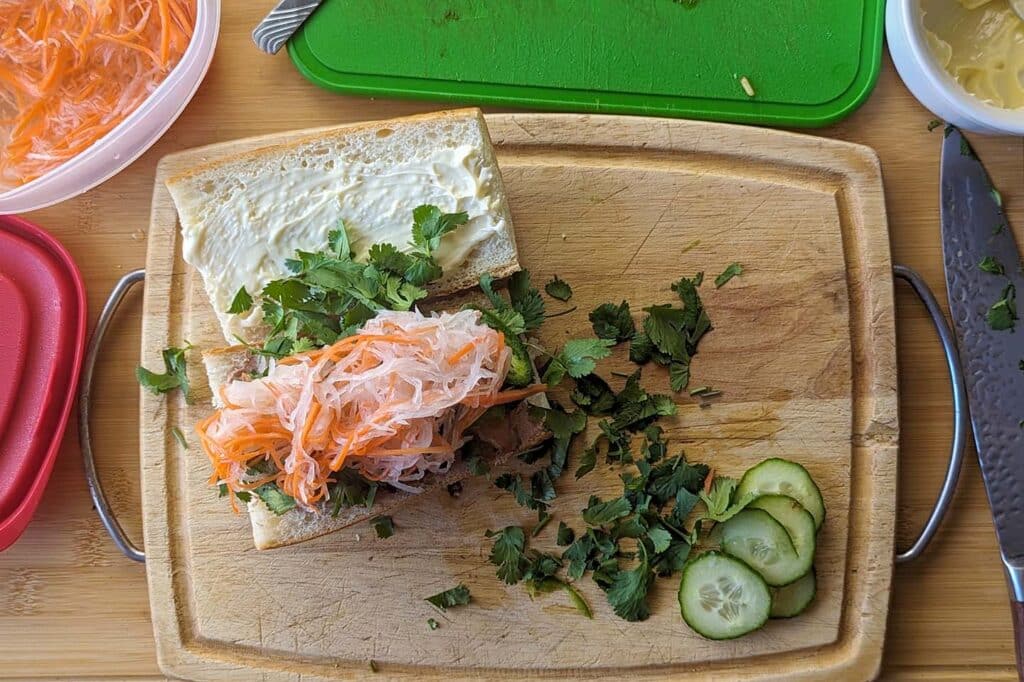
What is the history of the banh mi sandwich?
This sandwich has a fascinating history that reflects the cultural influences on Vietnamese cuisine. Introduced during the French colonial period, this sandwich evolved as a fusion of French and Vietnamese culinary traditions. The baguette, a French import, became the foundation for this iconic sandwich, while the addition of local ingredients transformed it into a uniquely Vietnamese creation.
Do people in Vietnam eat banh mi?
Absolutely! Banh Mi is a staple in Vietnamese street food culture. While variations may exist, the essence of this sandwich remains constant across Vietnam. It’s a quick, flavorful, and affordable option enjoyed by people from all walks of life.
What goes with Banh Mi sandwiches?
Banh Mi sandwiches pair wonderfully with a variety of side dishes. Traditional accompaniments include crispy spring rolls, fresh summer rolls, or a side of pho, a Vietnamese noodle soup. The vibrant and contrasting tastes make for a satisfying and well-balanced meal.
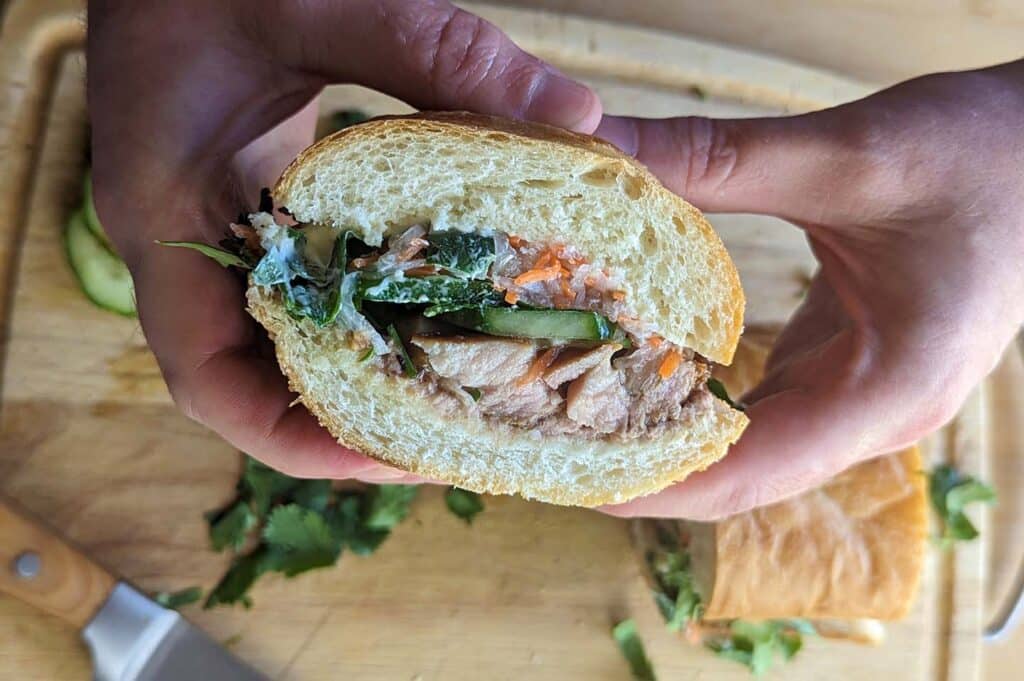
How do you pronounce banh mi?
Banh Mi is pronounced as “bahn mee.” The term “banh” refers to bread, while “mi” translates to wheat, collectively denoting a bread product. So, the next time you order this delectable sandwich, you’ll pronounce it with confidence!
What is the pink stuff on banh mi?
The pink element usually comes from Vietnamese pork sausage or cured meats. It’s a savory addition that complements the other ingredients, contributing to the sandwich’s diverse and harmonious flavor profile.
What are food taboos in Vietnam?
Vietnamese cuisine has its set of cultural norms and taboos. It’s customary to bring a small gift if invited to someone’s home for a meal. Additionally, slurping noodles is considered a sign of appreciation, but loud eating may be perceived as impolite. Understanding and respecting these cultural nuances enhances the dining experience.
What are 3 popular foods in Vietnam?
Vietnam boasts a rich culinary heritage with several popular dishes. Three must-try Vietnamese foods include:
- Pho: A fragrant noodle soup with flavorful broth, herbs, and a choice of protein.
- Banh Xeo: Crispy Vietnamese pancakes filled with shrimp, pork, and bean sprouts.
- Goi Cuon: Fresh spring rolls filled with shrimp, herbs, pork, rice vermicelli, and wrapped in rice paper.
This delicious sandwich, with its roots in Vietnam, has found a special place in the hearts and taste buds of Washingtonians.
Whether you enjoy it from a local food truck or craft it at home, this sandwich is a delightful blend of cultural influences and diverse veggies that continue to captivate food enthusiasts throughout the world.
- 3 lb boneless, skinless chicken thighs
- ½ cup oyster sauce
- ½ cup fresh lemongrass minced
- 4 garlic cloves minced
- 1½ tbsp soy sauce
- 1 tbsp Shoxing wine
- 1 tbsp fish sauce
- 2 tbsp white sugar
- 2 tbsp honey
- 1 tsp Chinese five spice
- ½ large daikon peeled cut into very thin strands ~ 3 inch long*
- 2 medium carrots cut in same manner as daikon
- ½ cup white sugar
- 1½ cup boiling water
- 1 cup rice vinegar
- 4 tsp kosher salt
- 4 8" crusty French loaves
- 4 tbsp Kewpie or other whole egg mayo
- 3 tbsp unsalted butter softened
- 4 oz pate
- 1 cup cilantro sprigs
- 1 English cucumber thinly sliced
- 2 – 3 jalapenos thinly sliced
- In a large bowl, toss the carrot and daikon in 2 tsp of salt. Allow to sit for 15 minutes then rinse veggies and squeeze out excess water.
- In the large bowl, stir together remaining salt, sugar, and boiling water until dissolved. Add rice vinegar. Add back in the daikon and carrot. Let sit on counter of a couple of hours for the best results. Once cooled, refrigerate leftovers. (You can make this up to several days in advance).
- In a medium sized bowl thoroughly combine all the ingredients, except the chicken. Place the chicken in a plastic bag. Add marinade, seal bag, and thoroughly mix together so chicken is covered. Marinate in the refrigerator for at least one hour and overnight for the best flavor.
- Remove chicken from refrigerator and let sit at room temp for 30 minutes. Proceed with one of the following cooking methods:
- Grill at 400°F for 10 minutes per side. Reserve some of the marinade to baste over the chicken.
- Roast at 400°F for 15 minutes, flip, baste with marinade, then cook another 15 minutes.
- Let rest while you prepare the rest of your bahn mi.
- Mix together the butter and mayo. Split the bread rolls in half, but not all the way through. Spread pate onto the bottom and the mayo/butter mixture on the top.
- Add sliced chicken. Then stuff with the pickled vegetables, cucumber, jalapeno, and cilantro. Jam the top on and enjoy.

